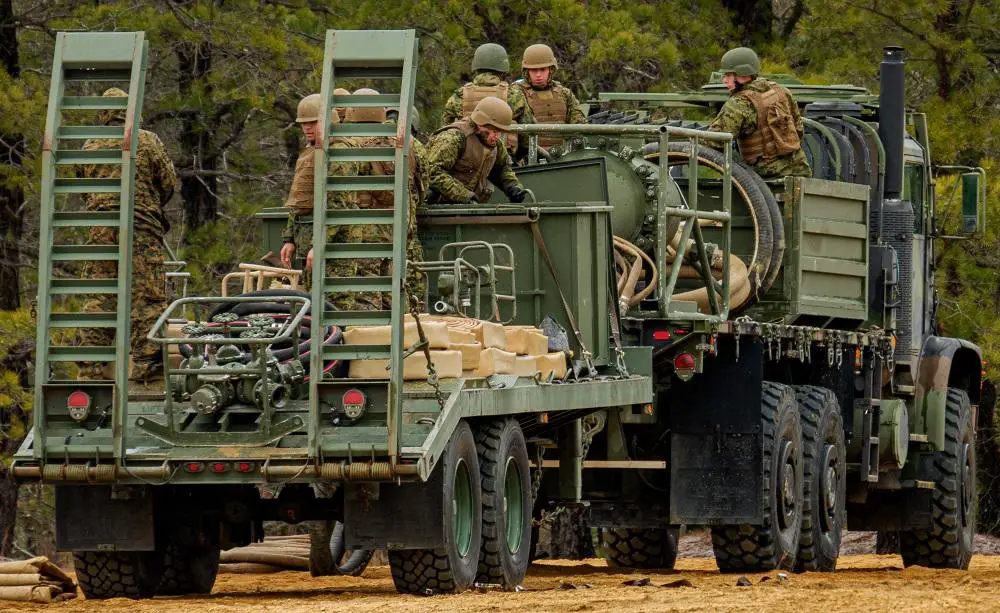Although the United States has enjoyed an asymmetrical logistical advantage since the end of World War II, emerging needs associated with the sustainment of fuel requirements in future battlefields have presented challenges for military leadership and the warfighter alike. Marine Corps Systems Command’s Fuel and Water Team recently initiated efforts to develop the Expeditionary Fuel Dispensing System, which provides increased battlefield flexibility to Marines. Also known as EFDS, the new program of record reconfigures capabilities existent in legacy fuel systems, such as the Amphibious Assault Fuel System – AAFS — and the Tactical Airfield Fuel Dispensing System – TAFDS — into smaller, more agile expedient capabilities.
“We’re looking at a much smaller footprint. EFDS allows us to take a 1.1-million-gallon fuel farm and break it down into much smaller pieces. It really makes things much more manageable,” said EFDS Project Officer Master Sgt. Vidal Rojas Giron.
“EFDS allows Marine Corps Systems Command to replace legacy systems. It increases expeditionary capabilities by allowing the Bulk Fuel Marines to choose between a small, medium or large containerized system,” explained EFDS Lead Logistician Linnis Hobbs.

Although the Expeditionary Fuel Dispensing System (EFDS) can still handle large amounts of fuel, the system enables commanders to select tailored bulk fuel capabilities instead of having to employ large, cumbersome legacy fuel systems while executing missions in distributed operational environments. As Russian logistical failures during the earliest days of the Kremlin’s invasion of Ukraine have demonstrated, the decentralization of fuel systems – and the elimination of “liquid mountains” – is a necessary capability in a world where rival powers have access to precisions weapons systems. To expedite the fuel systems modernization efforts, MARCORSYSCOM’s Program Manager Engineer Systems recently teamed up with II Marine Expeditionary Force, Marine Corps Logistics Command and Marine Force Storage Command to conduct an inventory of all AAFS and TAFDS bulk fuel assets located in storage at Marine Corps Logistics Base Albany, Georgia.
Between Aug. 22 and Oct. 22, 2022, Marines from II MEF came together to inventory and inspect legacy fuel systems to determine if the equipment is viable to fill Fleet needs and improve readiness, while simultaneously informing the acquisition strategy development for the EFDS – demonstrating the power that exists when various Marine Corps commands collaborate and function together to provide key support for the Fleet Marine Force. Although running inventory and clearing warehouses might not sound like a newsworthy feat, Warner believes the efforts will provide immediate results – and increase the lethality of warfighters on the ground today. But Warner says there’s still more work to be done and MCSC will partner with I MEF Marines to conduct a similar effort at MCLB Barstow in January 2023.
















